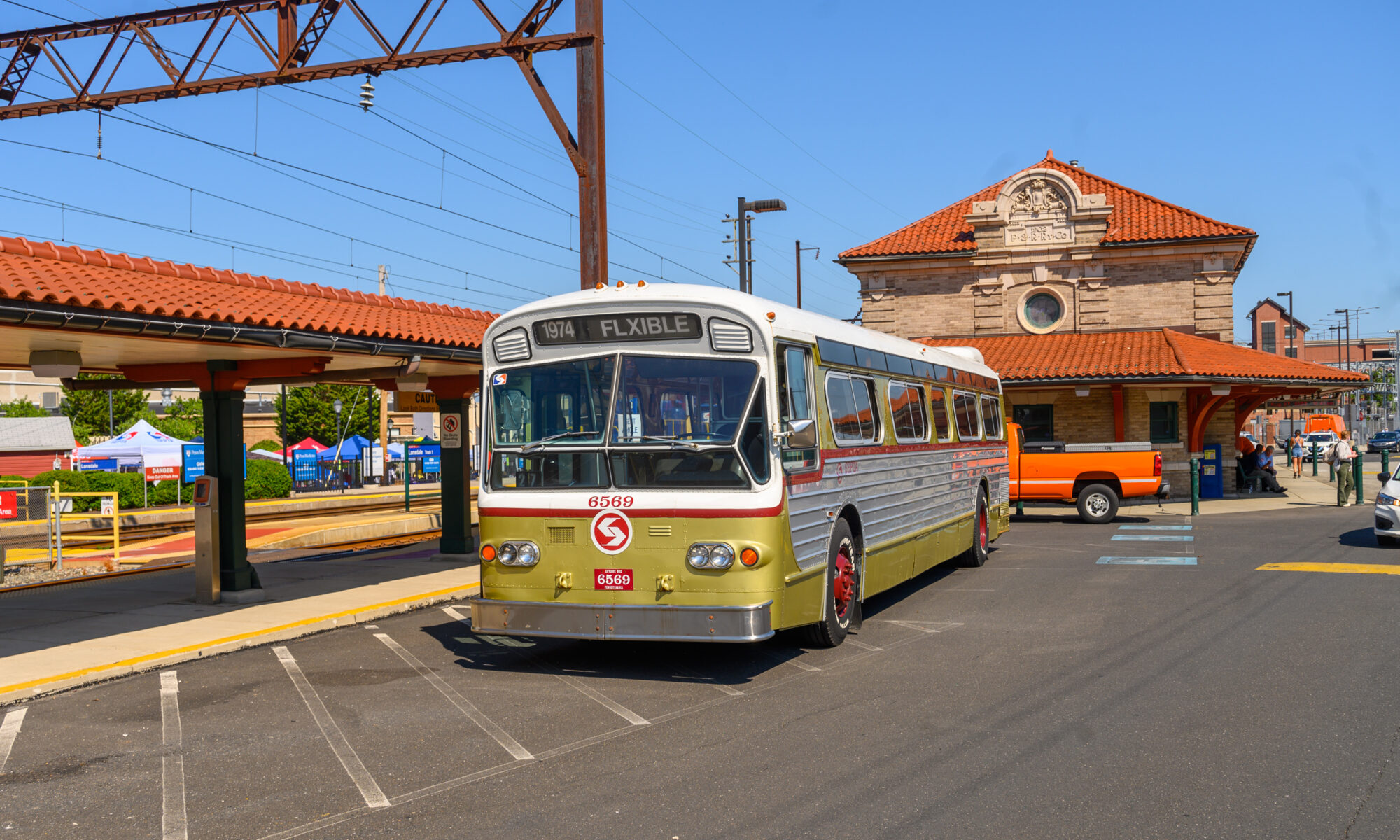SEPTA 601 and 602 are former NJ Transit Arrow II M.U. cars, not Arrow III. They were former NJT Arrow II cars 1236-1237. They are the only two survivors of what was originally a 70-car fleet of M.U.s.
When delivered to NJDOT in 1973 (just ahead of the first Silverliner IV’s 9018-9031 for the Reading), the 70 Arrow II’s were all married pairs and numbered 534-603 atop the original Arrow I’s. They were later renumbered 1234-1303 underneath the Arrow III’s as they were delivered after our last Silverliner IV’s in 1976-1977.
As delivered, the only differences between the Silverliner IV and the Arrow II were the use of center doors on the Arrow II, no dynamic braking, a 26L straight-air brake valve (the Silverliner IV’s have a PS-88 brake valve, or something similar, and a short roof hump over the center doors (the arrow III’s have the two even smaller roof humps we see today while the Arrow II hump was identical to that on the Silverliner IV, only shorter). The Arrow II interior scheme was identical to that of the Silverliner IV’s before SEPTA redid the interiors of those cars in the early 2000’s.

NJDOT Arrow II 536 (GE 1974-75) on Amtrak train @Overbrook PA 8-21-80
(Source: http://www.flickr.com/photos/8226029@N06/3369700477/ – Photographer: Leon Kay / clkayleib)
The Arrow II’s ran various assignments on the NE Corridor and on the NJ Coast Line to South Amboy. In 1977, with the delivery of the Arrow III’s, the Arrow II’s became surplus due to the Morris & Esses re-electrification and voltage project not being complete at that time. Newer Arrow III’s took over all assignments, other Arrow III’s were stored brand new, and the Arrow II’s were leased out. Amtrak leased a small group of Arrow II’s for use on Keystone Service trains between Harrisburg and Philadelphia for a short while (replacing Silverliner III’s needed for SEPTA service. A larger group of Arrow II’s were leased to Maryland DOT for use on what is now the MARC Penn Line commuter runs between Baltimore and Washington, D.C.
It was while in Maryland DOT service that a train of Arrow II’s in commuter service got rear-ended by an Amtrak train with an E60 leading at the old Beltway-Lanham station (replaced by New Carrollton). The cab of the rear car was destroyed, and the pair became the only Arrow II set to never return to service. The pair sat outside Wilmington Shops for several years before being scrapped and I remember seeing the smashed in car sitting next to the shop building every time I was on Amtrak through 1978-1980 heading to Baltimore to visit cousins.
In 1984, with the Morris and Essex re-electrification completed, NJ Transit recalled the remaining 68 Arrow II cars. They were given an overhaul, and along with the group of stored Arrow III’s, all entered service on the Morris and Essex Lines. Arrow II’s and Arrow III’s often ran in mixed consists, as well as with their own kind, until the mid-1990’s when the Arrow III fleet went through it’s rebuild to AC traction systems, dynamic braking, and interior cleaning and refurbishment.
By this time, the Arrow II’s were beginning to show their age. Aside from receiving Stemman pantographs in the early 1990’s to replace the Faivleys they were delivered with, NJT did no major work on the Arrow II’s since the 1984 light overhauls and it showed. In the mid 1990’s, NJT considered giving the Arrow II’s the same rebuild treatment as the Arrow III’s, but later decided against it due to cost, and instead of rebuilding 68 Arrow II’s, they ordered the 95 Comet IV’s instead. With the arrival of the Comet IV’s and more ALP44 locomotives in 1997, the Arrow II’s rolled their last miles, and all 68 of them were herded into storage at the MMC at South Kearny, NJ. By 2000, all 68 of them were off the property, in the hands of scrap dealers.
Except for two. SEPTA, in need of a new cab car for their wire train to replace former Blueliner 9125 snatched up Arrow II pair 1236-1237 and they sat in storage at Wayne Electric for a few years, as the conversion of 1237 to cab car 601 was done on a “time allowed” basis. After removal of the roof hump and replacing the Stemman pantograph with a Faively, and other needed modifications to the control systems and change out of the couplers to standard knuckles, the 1237, reincarnated as SEPTA 601 now serves as the wire train cab car.
Likewise, similar treatment has been done to car 1236, and after an extended storage period, it has emerged as cab car 602. Currently in use as the Pennsy-side gel/wash train cab car, it will eventually become the cab car for a second wire train being assembled. When the second wire train is completed, the current wire train equipment, is slated for an overhaul. When the overhaul is completed, SEPTA will then have one wire train for each side of the Regional Rail system.
Reference:
Source: Parlin, Joe. (2009, November 20). Silverliner iv with center door Retrieved from http://philadelphiatransitforums.cjb.net/topic/7167184/2/#new
